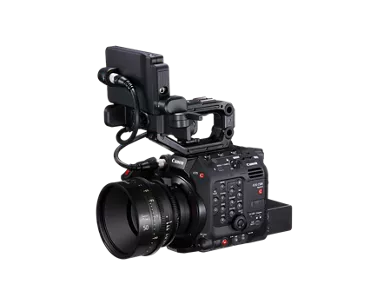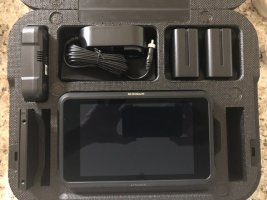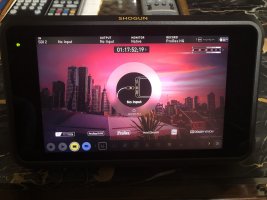So, for the R5, both line-skipped FF 4K30 and oversampled APS-C 4K30 have no heat issues?
Which means, in video mode it's actually no worse than any other weather-sealed mirrorless camera with stills ergonomics?
Yes, and that means it looks like the thermals are basically where everyone else is right now.
The two modes it doesn't overheat are actually the same two modes I shoot in all the time for long events, etc. I'm either shooting 4K24 FF or using a mapped hotkey to switch to a S35 crop for a bit of extra reach when needed. You don't always get time for a lens swap in certain situations. I've read that it may overheat in these binned/cropped modes as well if the ambient temperature rises, but my Sony's aren't unlimited in 4K recording either. I've gotten the A7III to overheat under the sun in FF (which is oversampled from 6K) after about 90mins, but I've never gotten the A7RIII to overheat ever in any situation (since it is binned in FF and oversampled from 5K in S35 which I only sporadically use). This is why my A7III is always with the gimbal operator and I'm usually with the A7RIII covering the speeches, speakers, etc.
That being said, the new Canon R5/R6 shoot at a higher bitrate and bit-depth than all of the Sony's on the market. I think Canon played its cards right this time. If you think about it, it has achieved product segmentation from its cinema line without the need to reduce or exclude features. Both the thermals and retaining the 29:59 limit won't appear to be purposeful "crippling" so to speak. In fact, the R5 includes headlining features like 8K and RAW which nobody else has and is a big marketing win. It goes a long way in breaking the negative press cycle of Canon's "cripple hammer" approach.
When Sony releases their A7SIII which will be limited to probably 4K120, no internal RAW, but unlimited recording in all modes, casual observers will see the R5 w/ 45MP+8K+INTERNAL RAW and compare it with the A7SIII w/ 12MP+4K+ONLY 422 INTERNAL and quickly see who the "victor" is. Whether or not either camera is actually better will really depend on how you shoot. IMO, neither approach is right or wrong.
On that same note, I don't agree that us who do a lot of video work on MILCs should just "Get a cinema camera.." The form factor, size and weight are entirely different and thus the production gear to support those cameras are much larger. I can pack a mini motorized slider, 3 axis timelapse moco, dji gimbal, 2 bodies and a few primes and batteries all in a Peak design backpack. For the types of work that support this type of loadout, I will also never shoot RAW and rather have a lighter weight codec that can reduce time in post and minimize storage and archival requirements.
For pre-planned content, docs and narratives, I shoot those on my RED where I can afford the 15-20 secs it takes to boot-up, the need to blackshade at different settings and ambient temps and takes v-mounts that only run 80mins or so. The menus are also complex and laggy to the point there is an iOS app (Donna Pro) that simulates the menu for DPs and ACs to practice on. Also depending on the compression ratio, minimags can fill up exceptionally quick, but a DIT is usually backing up and cycling mags.
MILCs can do a bit of everything. It can do a bit of ENG/EFP work like a C200/C300 but with better AF and IBIS for handheld work, but doesn't have a great audio section, NDs or ergonomics like on body controls, etc. It can also do a bit pre-planned/narrative work in the realm of cine cameras with a larger sensor for better noise control and artistic DoF control, but as a result of its design limitations, are heat limited affecting shooting time because it needs to balance stills resolution. Some of this is a limit of the tech available and some of this is artificially imposed as a result of product segmentation from manufacturers.
Years ago, when the hybrid market was just getting off its feet, many of us were just discovering the equipment and workflows that suited shooting video on a MILC. But today, most of us in that market do have a clue and have found good solutions in the market (not always Canon) that fit that a video use case that isn't always "get a cinema camera". What that means is, in the past, I would need a stills body, an ENG camcorder and a cinema camera to cover 3 different types of situations. Nowadays, with compromises, A person can sometimes cover all 3 with 1 and specifically in my case, I can cover stills and ENG work with MILCs and leave shooting projects where I want RAW on a cinema camera. The real question is where you want those compromises. For myself I will mostly be going with the A7SIII only because the limitations on the R5 are an absolute deal-breaker for the type of shooting I want MILCs for and it isn't because I need a "cinema camera.." because I already have one and it isn't necessarily the best choice either.



